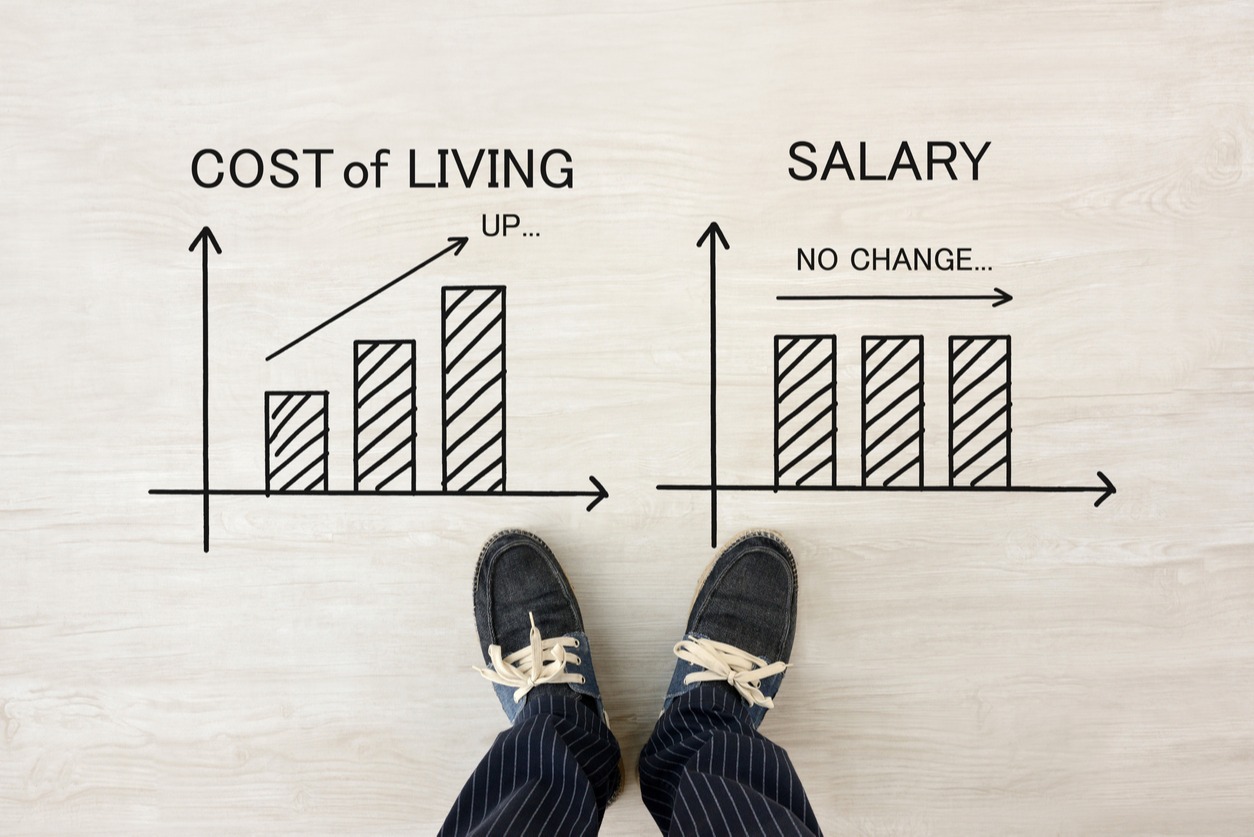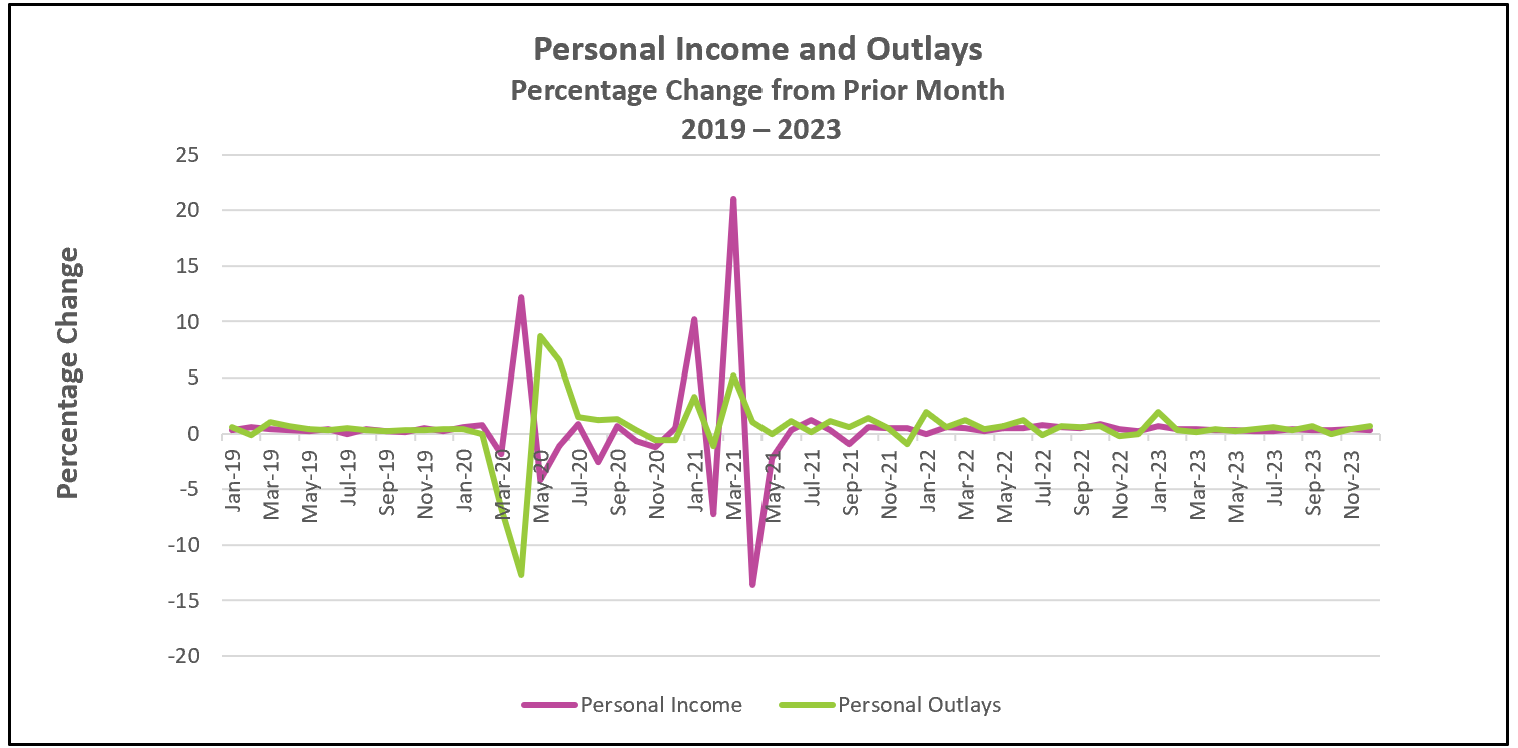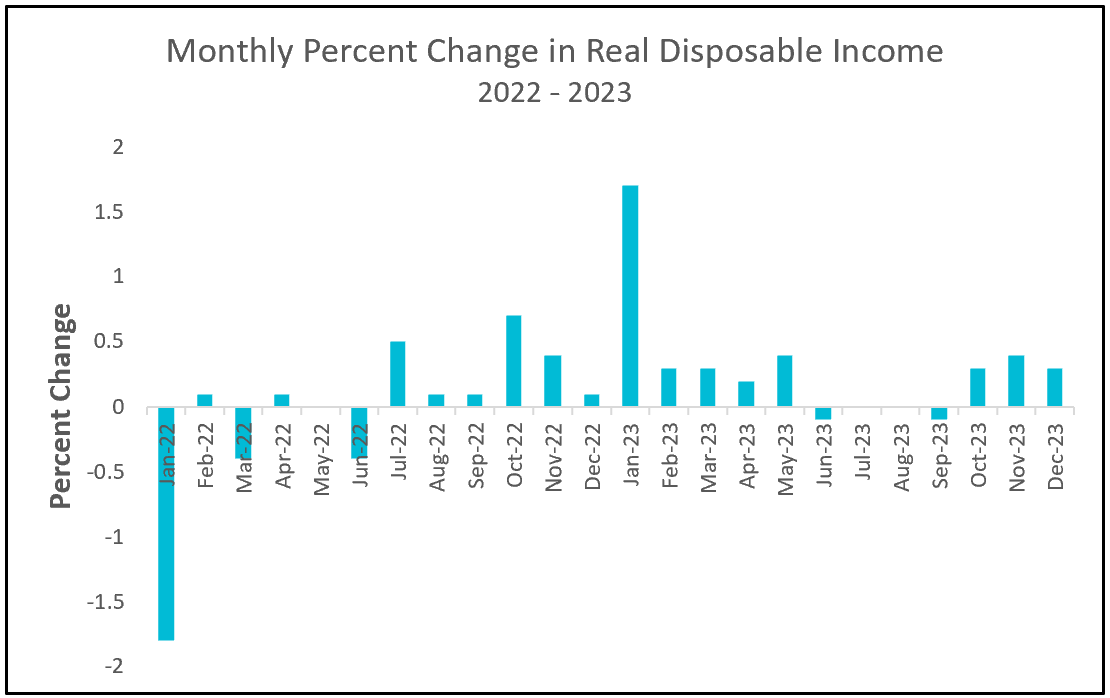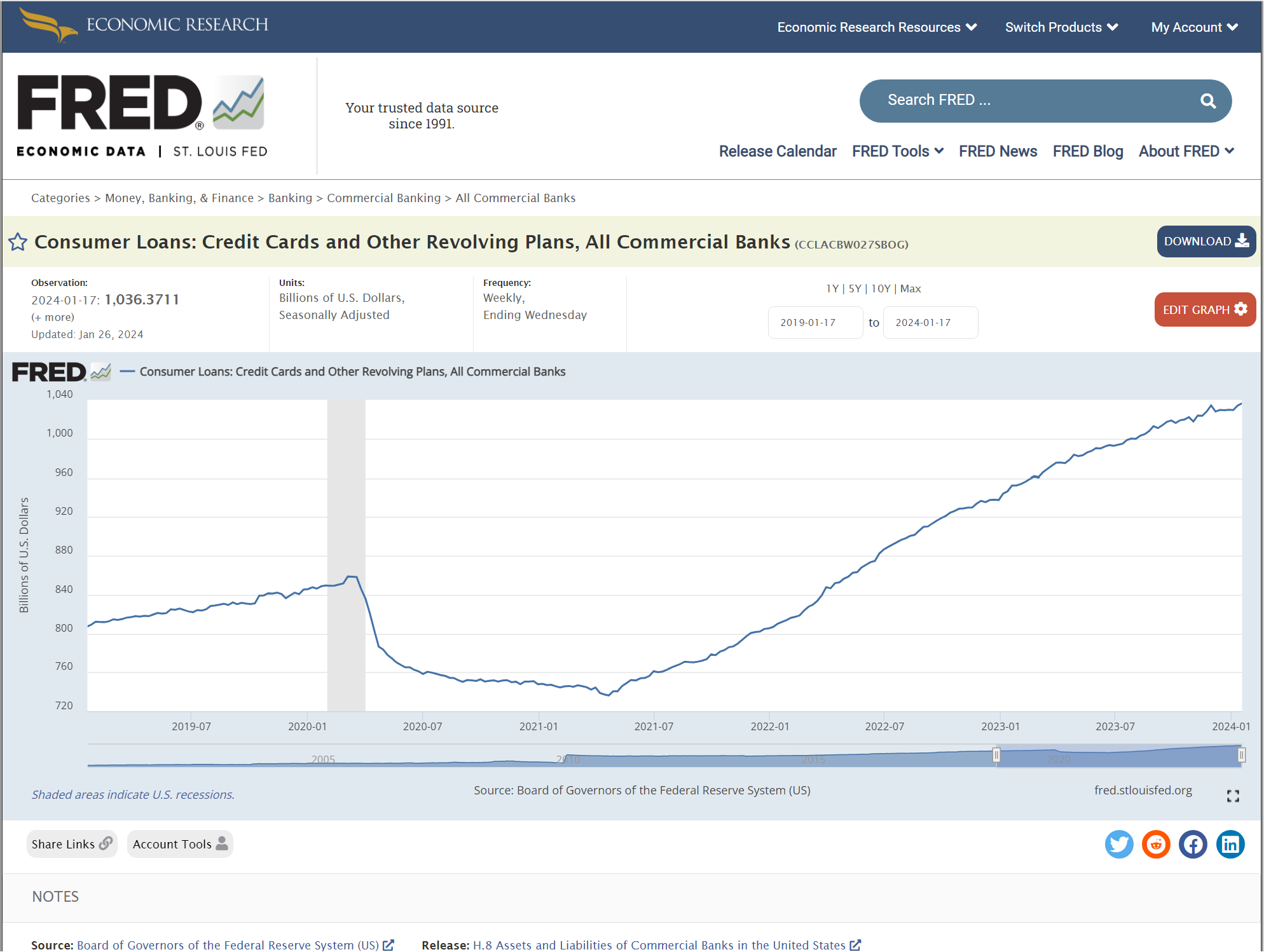
Consumers are expressing optimism following recent increases in wages and a decrease in inflation. This positive sentiment translated into a surge in holiday spending, as highlighted in a recent news release by the Bureau of Economic Analysis. The highlights of Personal Income and Outlays – December 2023 are listed below.

Consumer confidence has reached its highest level since July 2021, as indicated by January’s sentiment index published by the University of Michigan. The driving force behind this optimism is the combination of rising wages and declining inflation rates, which have lightened the financial strain for many households. A low unemployment rate and a robust labor market have also reduced concerns about potential job losses. These factors collectively contributed to a notable surge in consumer spending.
In fact, inflation-adjusted spending experienced a 0.5% rise in both December and November. During 2023, only January witnessed an even more substantial increase of 1.5%, but January’s increase occurred following two months when consumer spending declined.
Household budgets were less strained because the growth in household disposable income—income after taxes— also exceeded inflation but grew at a slower pace than it did early in the fourth quarter. The graph below illustrates the percentage change in real (inflation-adjusted) disposable income. Instances where the bar dipped below zero indicate that disposable income failed to match inflation. Notably, the graph depicts that inflation-adjusted disposable income remained negative in early 2022 and turned positive during the latter part of 2022 and for most of 2023.

In addition to workers earning more, added payrolls provide additional funds for spending on goods and services. Simultaneously, households are allocating a larger portion of their income towards expenditures. December’s savings rate fell to its lowest level since November 2022. Finally, people are borrowing more.

The collective impact of higher income, a growing workforce, diminished savings, and heightened borrowing contributes to more consumer spending. However, the rise in debt, coupled with the decline in savings, raises concerns about the sustainability of this increase.
The PCE price index rose 2.6% during 2023, in contrast to the more widely publicized consumer price index (CPI), which recorded a 3.4% uptick. The prevailing consensus among economists favors the PCE price index as a more reliable measure due to its consideration of shifts in spending patterns resulting from price fluctuations. Unlike the CPI, the PCE price index accounts for consumer behavior changes, such as substituting chicken for beef if the price of the latter increases. Additionally, the CPI places greater emphasis on rental and housing expenses, which have been slow to decline.
Typically, inflation accelerates during periods of heightened spending in a robust labor market with low unemployment. Although inflation increased in monthly measures, the pivotal 12-month core rate fell below 3% for the first time since March 2021. Economists prefer core rates for their reliability in identifying trends because they exclude volatile food and energy prices. Federal Reserve policymakers are targeting a 2% core inflation rate, and the current data suggests the economy may have already reached this target. The core rate showed an annualized increase of 1.9% over the previous six months and 1.5% over the last three months.
Policymakers at the Federal Reserve are scheduled to convene later this week to deliberate on monetary policy and contemplate the possibility of adjusting their benchmark rate. While analysts anticipate the Fed will maintain its current rate, they will closely scrutinize post-meeting comments from Chairman Jerome Powell for insights into the potential timing of any future rate reductions.
Annually, Higher Rock forecasts the trajectory of the US economy. So, how did our predictions for 2023 fare? This Wednesday, we will unveil US Economy 2024 - Where Are We Headed? This comprehensive report will feature our analysis of the economic landscape in 2023 and present our forecasts for the upcoming year, 2024.